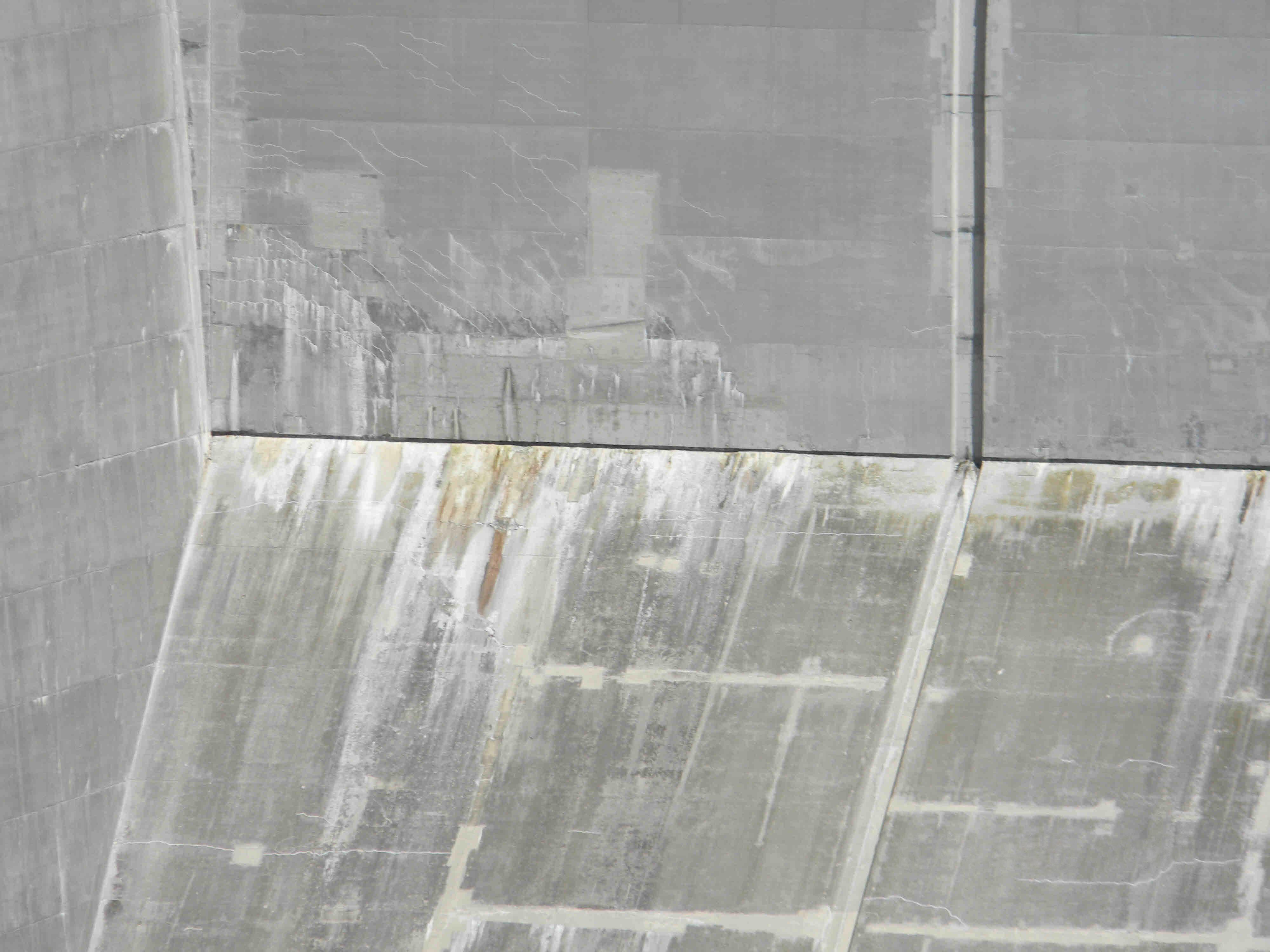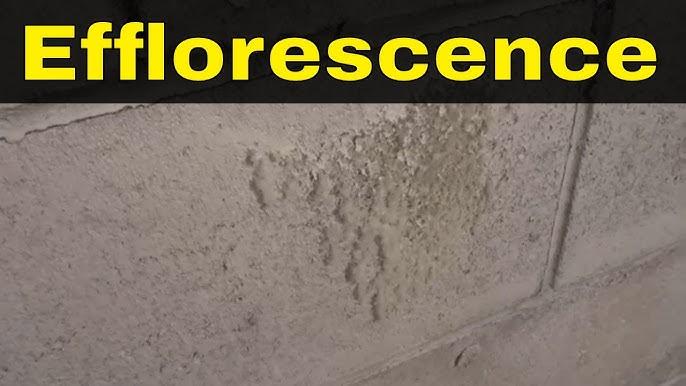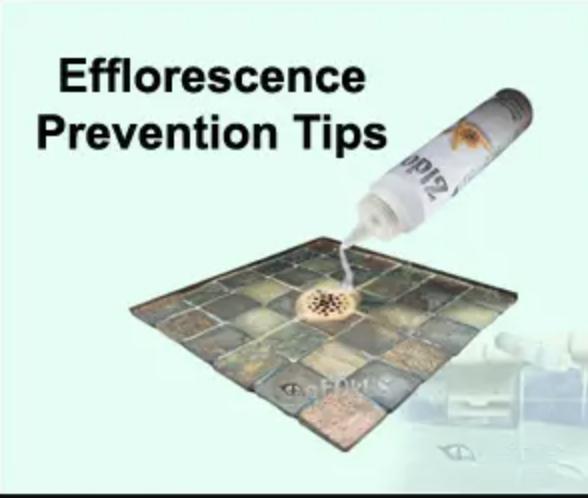



Table of Contents
- Introduction
- Understanding Efflorescence
- Causes of Efflorescence
- Preventive Measures
- Remedial Measures
- Case Studies
- Conclusion
- Faq's
Introduction
Efflorescence is a widespread issue in construction, appearing as unsightly white, powdery deposits on the surfaces of masonry, concrete, and brick structures. This phenomenon occurs when water-soluble salts present within building materials dissolve in moisture and migrate to the surface through capillary action. As the water evaporates, these salts crystallize, leaving behind a noticeable residue. While efflorescence is primarily a cosmetic issue, its presence often signals excessive moisture infiltration, which, if left unchecked, can contribute to long-term structural deterioration. The frequency and severity of efflorescence depend on factors such as the porosity of materials, environmental conditions, and construction quality.
Beyond its aesthetic impact, persistent efflorescence can be a warning sign of deeper moisture-related problems. If not addressed, prolonged water exposure can lead to weakened masonry, corrosion of embedded steel reinforcements, and the eventual degradation of structural components. This makes it essential for builders, homeowners, and property managers to identify and mitigate the root causes of efflorescence early. Through proper material selection, effective waterproofing strategies, and regular maintenance, efflorescence can be controlled, ensuring the longevity and visual appeal of buildings.
Understanding Efflorescence
 Efflorescence, Wiki
Efflorescence, Wiki
Efflorescence manifests as white or grayish deposits on building surfaces, resulting from the migration of water-soluble salts to the exterior. This process involves three primary conditions:
Presence of Soluble Salts
Efflorescence begins with the presence of soluble salts within building materials. These salts, including calcium sulfate, sodium sulfate, and potassium carbonate, naturally occur in raw materials used in construction, such as cement, bricks, sand, and aggregates. During the manufacturing process, improper handling, contamination, or the use of saline water can introduce excess salts into these materials. Additionally, environmental factors like exposure to seawater, groundwater, or contaminated soil can further increase the salt content in masonry, concrete, or plaster. If these salts remain dormant within the material, efflorescence may not occur; however, when combined with moisture, they can dissolve and migrate to the surface, forming the unsightly white deposits.
Moisture
Water plays a crucial role in the formation of efflorescence as it acts as the transport medium for soluble salts. Moisture can enter construction materials through various sources, such as rainwater infiltration, condensation, leakage from plumbing systems, or groundwater wicking. Poorly maintained buildings, cracks in walls, and inadequate waterproofing allow excessive water penetration, increasing the likelihood of efflorescence. The problem is more prevalent in areas with high humidity or frequent wet conditions, where water absorption is continuous. Once inside, water dissolves the salts present in the material, creating a solution that moves through the porous structure toward the surface.
Pathways for Migration
Porous construction materials like brick, mortar, and concrete provide a network of tiny capillary channels that facilitate the movement of moisture and dissolved salts. The finer the pores, the greater the capillary action, allowing water to travel through the structure even against gravity. This explains why efflorescence commonly appears on walls, basement floors, and other exposed surfaces where moisture movement is prevalent. Once the water reaches the outer surface, it evaporates, leaving behind crystallized salt deposits. The extent of efflorescence depends on the material's porosity, the salt content, and the level of moisture exposure. Over time, repeated occurrences can lead to the degradation of surface finishes, aesthetic deterioration, and potential long-term structural damage if moisture-related issues are not addressed.
Upon reaching the surface, the water evaporates, leaving behind crystalline salt deposits efflorescence. While it does not directly weaken structural components, its presence indicates moisture issues that could lead to more severe problems over time.
Also Read: Types of Stirrups in Concrete Structures: How They Prevent Shear Failure
Causes of Efflorescence
 Causes of Efflorescence, YT
Causes of Efflorescence, YT
Moisture Intrusion
Moisture is the primary catalyst for efflorescence. Water can infiltrate building materials through various means:
- Rainwater Penetration: Inadequate sealing or damaged exteriors allow rainwater to seep into walls and foundations.
- Groundwater Wicking: Capillary action can draw groundwater into porous materials, especially in areas with high water tables.
- Leaks: Plumbing issues or roof leaks introduce moisture into structural components.
Once inside, this moisture dissolves soluble salts, facilitating their movement to the surface.
Presence of Soluble Salts
The inherent composition of construction materials often includes soluble salts:
- Clay Bricks: May contain sulfates from the clay used.
- Concrete: Aggregates and mixing water can introduce chlorides and nitrates.
- Mortar: Cement and sand might harbor various salts.
External sources, such as de-icing salts or seawater exposure, can also contribute to the salt content in materials.
Temperature and Humidity Fluctuations
Environmental conditions significantly influence efflorescence:
- High Humidity: Slows evaporation, allowing more time for salts to migrate to the surface.
- Temperature Variations: Can cause condensation within materials, introducing moisture that mobilizes salts.
Regions experiencing frequent temperature swings or high humidity are more susceptible to efflorescence.
Poor Construction Practices
Substandard construction methods can exacerbate efflorescence:
- Inadequate Waterproofing: Lack of proper barriers allows moisture ingress.
- Improper Mixing: Excessive water in concrete or mortar increases porosity, facilitating moisture movement.
- Insufficient Curing: Leads to incomplete hydration, leaving unbound salts that can migrate later.
Ensuring adherence to best practices during construction is crucial in mitigating efflorescence risks.
Preventive Measures
 Prevention Measures, pFOkUS
Prevention Measures, pFOkUS
Use of Quality Materials
Selecting materials with low soluble salt content is foundational:
- Certified Aggregates: Ensure sand and gravel are washed and free from contaminants.
- Low-Alkali Cement: Reduces the potential for alkali-silica reactions that can produce soluble salts.
- Potable Mixing Water: Utilize clean water devoid of dissolved salts.
Specifying quality materials minimizes the introduction of salts into the structure.
Proper Curing Techniques
Effective curing enhances the durability and density of concrete and mortar:
- Controlled Moisture: Maintain adequate moisture levels during curing to promote complete hydration.
- Temperature Management: Protect curing materials from extreme temperatures to prevent cracking and porosity.
Proper curing reduces permeability, limiting pathways for moisture and salts.
Effective Drainage Systems
Designing an efficient water management system ensures that moisture does not accumulate within building materials, thereby reducing the risk of efflorescence.
- Sloped Surfaces: Ensuring proper slopes on roofs, balconies, and terraces allows water to drain away instead of seeping into walls and foundations.
- Gutters and Downspouts: Well-maintained gutters and downspouts direct rainwater away from the structure, preventing water accumulation.
- Foundation Drainage: Using French drains or gravel beds around foundations prevents groundwater from seeping into the building.
- Proper Ventilation: Good air circulation in enclosed areas helps evaporate moisture before it penetrates materials.
Application of Sealants and Coatings
Applying protective coatings can significantly reduce moisture ingress.
- Silicone-Based Sealants: These penetrate deeply into masonry and concrete, forming a water-resistant barrier.
- Acrylic Sealers: Provide a breathable yet moisture-resistant layer, allowing trapped moisture to escape without bringing salts to the surface.
- Bituminous Coatings: Effective for waterproofing foundations and below-grade structures.
- Hydrophobic Treatments: Alter the surface properties of masonry to repel water while maintaining breathability.
Installation of Vapor Barriers
Vapor barriers are essential in controlling moisture movement, especially in high-humidity areas.
- Polythene Sheets: Placed beneath concrete slabs to prevent groundwater absorption.
- Bituminous Membranes: Used on walls and roofs to prevent moisture ingress.
- Breathable Wall Wraps: Allow water vapor to escape while preventing liquid water penetration.
Also Read: Curing Compounds in Construction: Why They Matter for Quality Concrete Work
Remedial Measures
 Remedial Measures, YT
Remedial Measures, YT
Despite best practices, efflorescence may still occur. Here are effective methods to remove existing deposits:
Dry Brushing
- Soft-Bristle Brushes: Used to gently remove salt deposits without damaging the surface.
- Vacuum Cleaning: Prevents loose particles from resettling.
Water Washing
- Low-Pressure Water Spray: Dissolves salts and washes them away.
- Scrubbing with a Stiff Brush: Helps remove stubborn deposits.
- Drying and Reapplication: If efflorescence reappears, repeat the process.
Chemical Cleaning
- Diluted Acid Solutions: A mixture of hydrochloric or phosphoric acid (1:10 ratio) can dissolve salts.
- Neutralizing with Baking Soda: Prevents residual acidity from damaging the surface.
- Commercial Efflorescence Removers: Available solutions tailored for masonry and concrete.
Sandblasting
For severe cases, sandblasting can remove persistent efflorescence, but it must be performed carefully to avoid surface damage.
- Wet Sandblasting: Minimizes dust and further salt migration.
- Fine Abrasive Materials: Prevents excessive surface erosion.
Application of Waterproofing Agents
Post-cleaning, applying waterproofing solutions ensures efflorescence does not recur.
- Silane/Siloxane-Based Repellents: Prevent water penetration while allowing vapor transmission.
- Epoxy Coatings: Seal surfaces entirely, preventing moisture intrusion.
Case Studies
Efflorescence in Residential Buildings: Mumbai
Mumbai's humid coastal environment, combined with the presence of salt-laden air, makes buildings highly susceptible to efflorescence. The issue was particularly evident in a residential housing society in South Mumbai, where white salt deposits frequently appeared on exterior walls and balconies. To combat this, the society implemented a multi-step approach, beginning with the application of high-quality waterproof coatings on external walls. These coatings acted as a protective barrier, preventing excessive moisture absorption and minimizing the movement of soluble salts to the surface. Additionally, periodic inspections and repainting with moisture-resistant paints helped to maintain long-term protection.
Further preventive measures included the use of polymer-modified mortar for repairs, which offered better adhesion and reduced porosity compared to traditional mortar. By sealing cracks and filling gaps with this advanced material, the society was able to limit water ingress. Another critical step was improving drainage systems within the premises, ensuring that rainwater and condensation did not accumulate around the foundation or seep into walls. By redirecting water away from the structure and ensuring proper sloping on terraces and open areas, the residents successfully minimized moisture-related issues, thereby reducing efflorescence formation over time.
Infrastructure Projects: Delhi Metro
The Delhi Metro, being an extensive underground transit system, faced a significant challenge with efflorescence caused by groundwater seepage. The underground stations and tunnels provided an ideal environment for moisture accumulation, leading to salt deposits on concrete surfaces. To address this, engineers utilized low-permeability concrete, which limited the amount of water absorbed into the structure. By incorporating admixtures that reduced porosity, the construction team effectively restricted the movement of dissolved salts within the concrete matrix, thereby reducing efflorescence formation.
Another crucial measure was the installation of advanced drainage systems to redirect seepage water away from critical infrastructure. Properly designed drainage channels and sump pumps were integrated into the metro's foundation, ensuring that excess moisture was efficiently removed before it could penetrate concrete walls. Additionally, hydrophobic treatments were applied to tunnel walls and station surfaces, forming a moisture-resistant layer that repelled water while still allowing the structure to breathe. These combined efforts not only mitigated efflorescence but also enhanced the durability and longevity of Delhi Metro's underground facilities.
Heritage Structures: Jaipur
The historic sandstone structures in Jaipur, known for their architectural grandeur, have been prone to efflorescence due to their high porosity. Over time, these buildings absorbed significant amounts of moisture from the environment, leading to salt deposits on walls, carvings, and domes. Conservation experts turned to traditional lime plaster coatings, which provided a breathable yet protective surface. Unlike modern cement-based materials, lime plaster allowed moisture to evaporate gradually, preventing salt accumulation on the surface. This method was particularly effective in preserving the integrity of the historical structures while maintaining their aesthetic value.
To further control efflorescence, conservation teams implemented controlled ventilation in enclosed heritage sites. Proper airflow helped regulate humidity levels, reducing condensation within walls and minimizing salt migration. Additionally, periodic chemical cleaning was performed using gentle, non-damaging solutions to remove existing salt deposits without harming the delicate sandstone. These conservation techniques successfully preserved Jaipur's iconic buildings, showcasing how a combination of traditional materials and modern scientific approaches can effectively manage efflorescence in heritage structures.
Also Read: Tower Cranes: Types, Uses, Costs, and Safety Standards
Conclusion
Efflorescence in construction, though primarily a cosmetic issue, signals underlying moisture problems that can escalate if left unaddressed. Preventing efflorescence requires a holistic approach encompassing quality material selection, proper construction practices, and effective moisture control strategies. In cases where it appears, timely removal using dry brushing, water washing, or chemical treatments can restore surfaces. Waterproofing solutions and vapor barriers play a crucial role in long-term prevention. With the right techniques and awareness, builders and homeowners can minimize efflorescence, ensuring durable and aesthetically appealing structures.
explore further
Latest from Editorials
More from Publications
Resources
Dwello, for every home buyer, is a way to go from 'I feel' to 'I know', at no extra cost.




